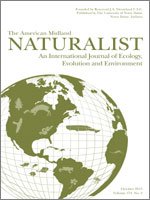Numerous authors have studied the diet of the Eastern Red-backed Salamander (Plethodon cinereus) and have described this species as a generalist predator of invertebrates. In most studies, prey taxa are identified to the family or order level. Additionally, few studies have directly assessed dietary preference by comparing diet to available prey. We chose an important component of the diet of red-backed salamanders (ants) to test whether salamanders altered their diets temporally and to determine if salamanders preyed on a subset of available ant prey. We identified ant species in salamander diets over a 13 mo period. In the fall season we also compared ants in stomach contents to those available in the surrounding leaf litter to determine if territorial residents of P. cinereus selectively forage on different ant species. We found significant temporal differences in ant species incorporated in the diet of P. cinereus that were consistent with our detailed examination of salamander ant preference in the fall. Our estimates of prey diversity and richness indicate that salamanders consumed a subset of available ant species. Aphaenogaster picea, an abundant species that prefers similar microhabitat characteristics to P. cinereus, made up a majority of the ants in the diet. However, our results indicate that P. cinereus avoids foraging on Myrmica punctiventris, Myrmecina americana, and Lasius alienus, ants that are among the most abundant species in the forested areas of northeastern Ohio where the study was conducted. These species are potentially aggressive and/or chemically defended, reducing their profitability as prey. The striped and unstriped morphs of red-backed salamanders foraged similarly on ant taxa, but the striped morph consumed significantly more ants and was found within territories that contained more ants. Our findings suggest selective foraging may be more common among generalist predators than previously considered, and we propose striped and unstriped morphs may represent a trophic polymorphism in P. cinereus.
How to translate text using browser tools
1 October 2015
Selective Foraging on Ants by a Terrestrial Polymorphic Salamander
Daniel J. Paluh,
Cameron Eddy,
Kaloyan Ivanov,
Cari-Ann M. Hickerson,
Carl D. Anthony
ACCESS THE FULL ARTICLE
It is not available for individual sale.
This article is only available to subscribers.
It is not available for individual sale.
It is not available for individual sale.





